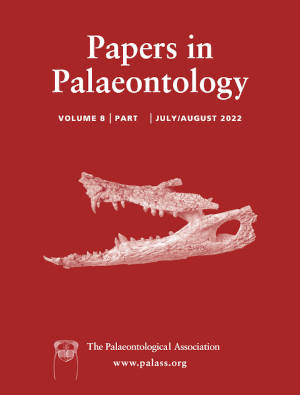Article: The first edrioasteroid echinoderm from the lower Cambrian Chengjiang biota of Yunnan Province, China
Publication: Papers in Palaeontology
Volume:
8
Part:
4
Publication Date:
2022
Article number:
e1465
Author(s):
Jun Zhao, Imran A. Rahman, Samuel Zamora, Ailin Chen, and Peiyun Cong
DOI:
10.1002/spp2.1465
Abstract
Abstract Until now, the earliest fossil echinoderms have been predominantly known from the early Cambrian of Laurentia and West Gondwana. Here, we describe Sprinkleoglobus extenuatus gen. et sp. nov. from the Chengjiang biota (Cambrian Series 2, Stage 3) of Yunnan Province, China. The overall profile of the theca and the morphology of the ambulacra clearly establish it as an edrioasteroid echinoderm. This represents the first discovery of an unequivocal echinoderm from the early part of the Cambrian of South China and is among the oldest records of echinoderms globally. Our material shows that edrioasteroids were diverse and widely distributed from their first occurrence in the fossil record, suggesting an earlier origin for the group. We infer that Sprinkleoglobus and other early echinoderms were adapted for attaching to hard substrates, implying that the so-called Cambrian substrate revolution was not a strong control on the early evolution of attachment in echinoderms.
